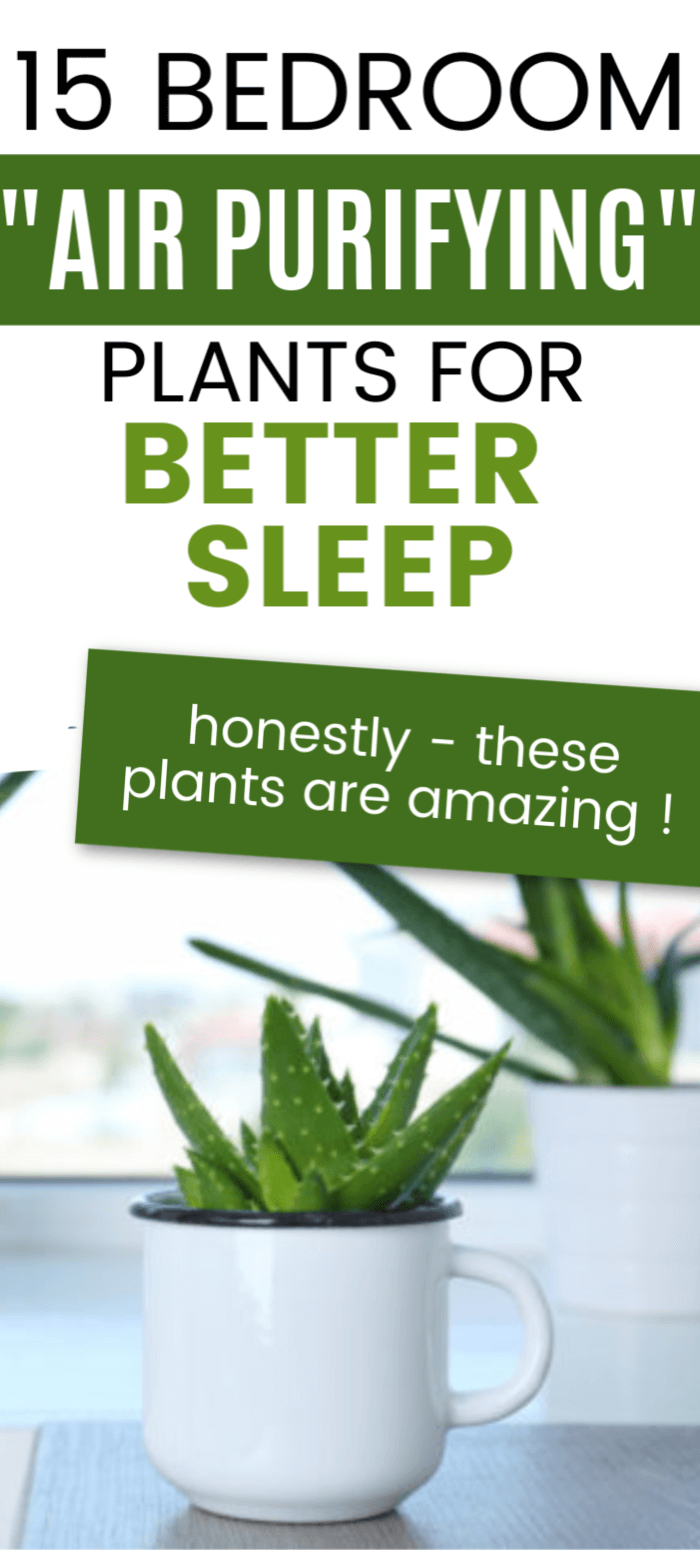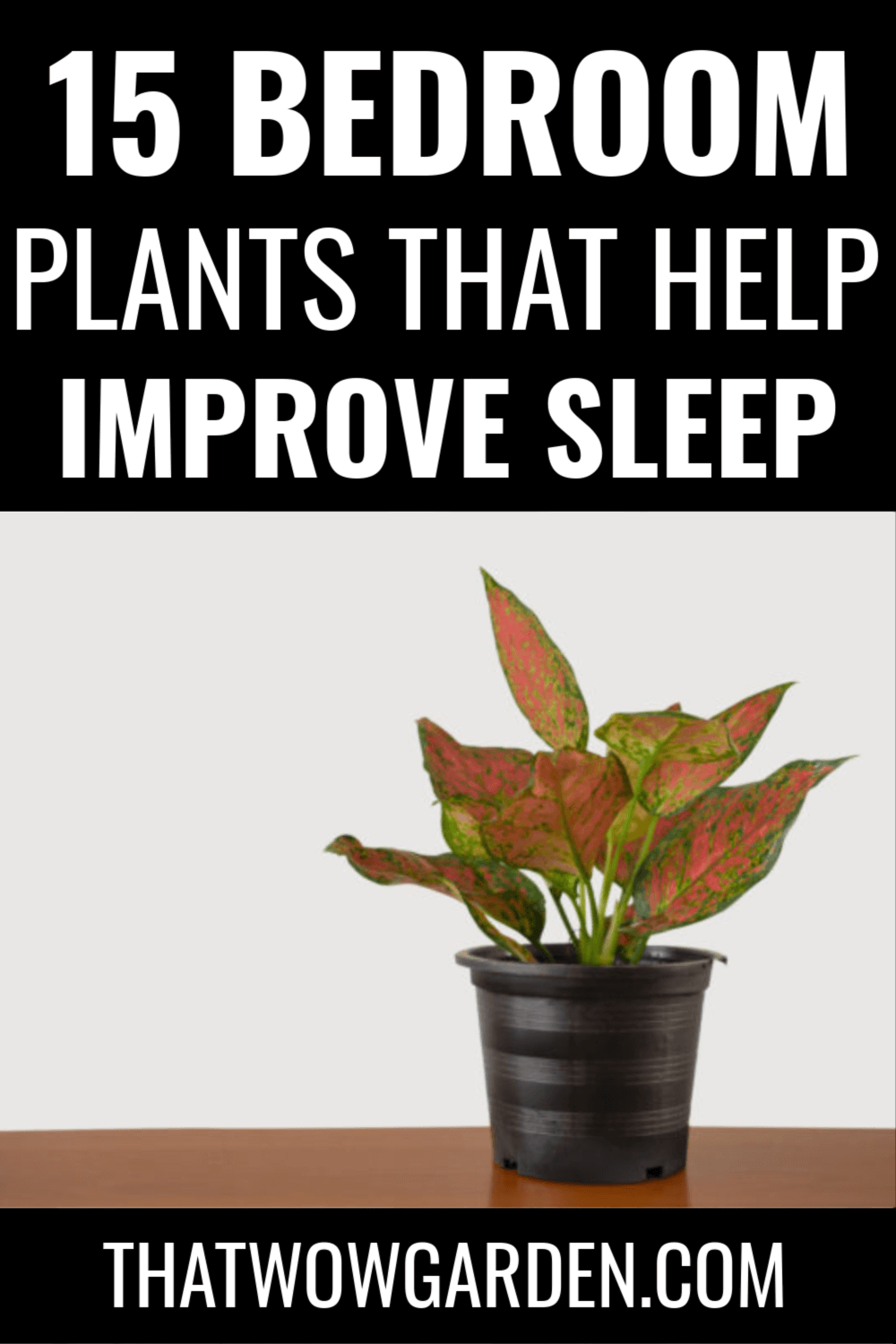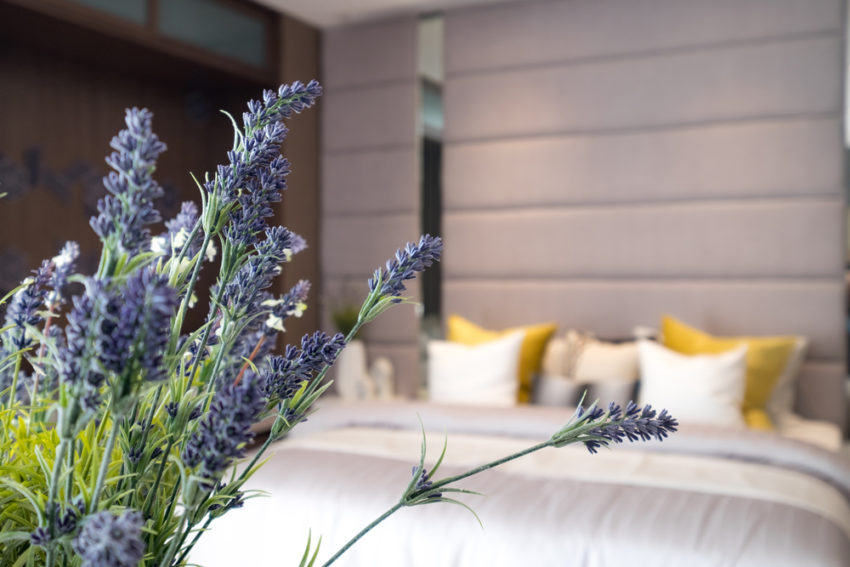Pollution all around the world has had many adverse effects on our surroundings. It affects not only the air we breathe but also our skin and hair. And the lack of plants may just be the reason that worsens the effect of pollution.
As more and more people live in big cities studio apartments and flats make for most of the living arrangements. This makes having an ideal backyard and picket fences a little harder. Since not all of us can have a backyard garden, having indoor plants makes the most sense.
Why should you have indoor plants?
1 Adding plants inside your house is proved to have improved your productivity and concentration.
2 Indoor plants can also help in reducing stress and fatigue.
3 They can also help with colds and sore throat.
4 And add clean indoor air by reducing toxins. They are your natural air-purifiers.
5 They also increase the humidity. This can help prevent respiratory problems in the future.
6 Indoor plants bring that minimalist vibe and pretty house decor.
Here is a curated list of bedroom plants that you should have in your home.
1. English Ivy
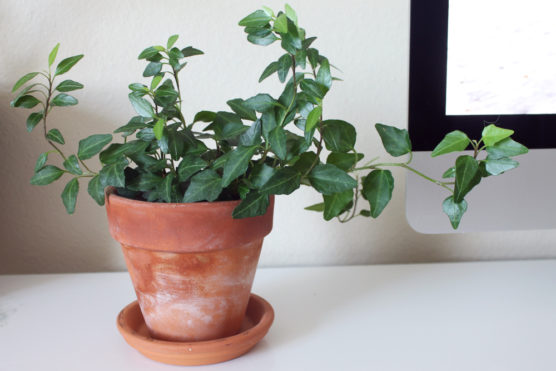
This evergreen beauty is the perfect plant to have in your bedroom. Studies have shown that English Ivy (Hedera Helix) can help clean indoor air. It makes for beautiful indoor decor (with the support of a pole for climbing) but can also be seen near windows.
English Ivy can thrive in both cold and warm temperatures given the temperature is kept consistent. It is also suggested that you keep this plant away from vents and doors in case of extreme temperature in your area. English Ivy is an ideal indoor plant because it grows amazingly in low light. Although if there is ample light (which can result in better leaves) make sure that it is filtered (if not the plant will dry quickly). This plant requires an evenly moist environment to thrive. While the Ivy is in the growth phase water it freely and later a weekly water spray will do.
2. Chinese Evergreens (Or Philippine Evergreens)
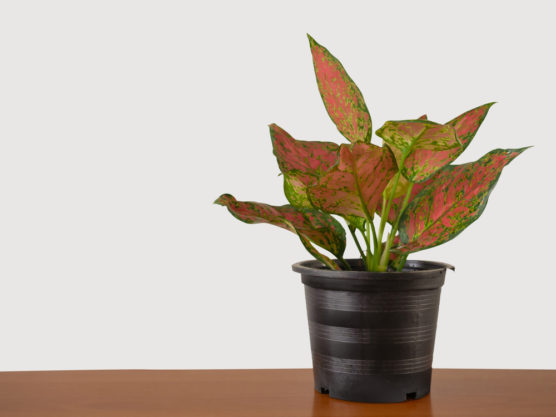
According to research in the Journal of Physiological Anthropology Chinese evergreens (also known as aglaonema brevispathum) removes cleans the air around them by getting rid of the toxins. The Chinese evergreen thrives the most in the area with humidity. So the best place for them in your home would be the kitchen or the bathroom (of course you can have them in the bedroom as well). Since they remove pollutant the same research also showed that placing them near a window will make the air-purifying more efficient.
Direct sunlight is not good for these plants so place them in partial shade. Also, moist soil works best for the Chinese evergreens. So, water it until the soil is moist. Don’t overdo the watering part as this could lead to fungal infestation like root rot. It is a small pot plant that can also be kept on a desk.
3. Snake Plant
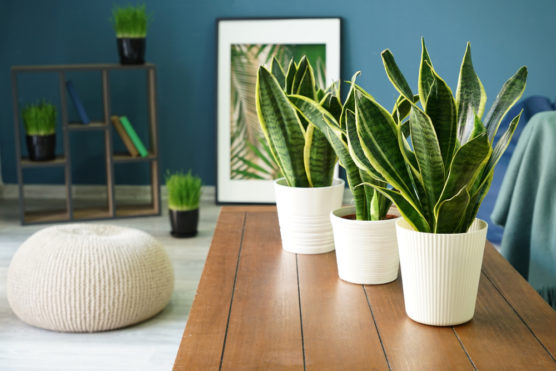
The snake plant (Scientifically known as sansevieria trifasciata) is a great addition to your apartment. The gorgeous green color will not only add a natural charm but will also absorb toxins from the air to keep your surrounding air clean and healthy.
This plant can grow inside and outside of the house (meaning it grows in both low light and direct sunlight). What makes this the perfect plant for your bedroom is that it can grow (although slower) well in shady areas as well. The snake plant needs to be kept in a warm area (preferably above 50 degrees Fahrenheit). Make sure you keep them away from windows during the winters to protect them from the chilly winds. Avoid frequent watering, let the soil dry before watering again. Also, wipe the leave at least once a week with a damp cloth to get rid of any accumulated dust.
4. Peace Lily
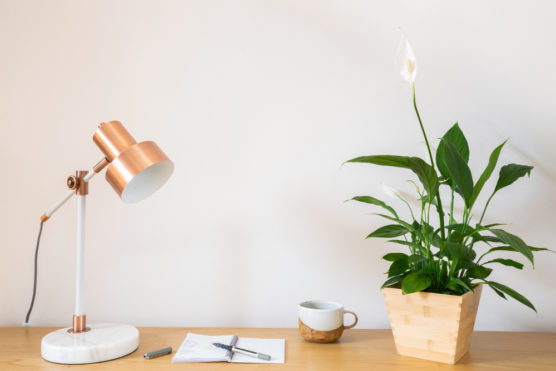
Peace lily (scientifically known as Spathiphyllum), also known as “closet plant” is one of the most popular plants to grow indoors because of its easy care routine. But you would still need to follow the environmental condition to grow this beauty properly inside your home. They can grow well in medium to low light. Although the results in the plant that grows will differ based on the light. If you want those beautiful white spathes then place the plant in medium light but if you want a traditional foliage plant go for a low light place.
Peace lilies can take underwatering but overwatering is a big no for these plants. So to avoid the overwatering, check the soil to see if the plant needs to be watered. Also, they do not need a lot of fertilizing, fertilizing once or twice a year is enough for peace lilies.
5. Chrysanthemum
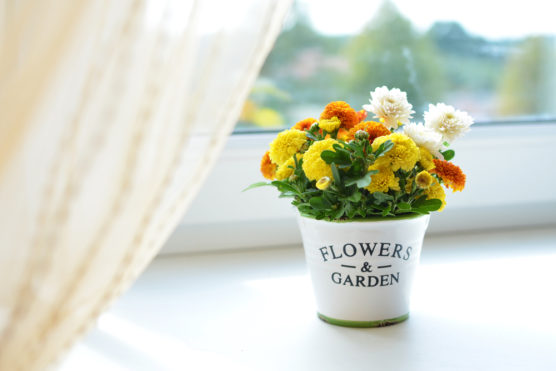
So the next time you are looking for a good house warming gift look no further than Chrysanthemum. They are pretty and add a little natural flavor to any home. They flourish in low light beautifully. As an indoor plant, they work in summers, you can brighten up any spot with these. But getting them to re-bloom indoors is a real hassle.
They are really cheap as well and if you live in warmer climates you can plant them outside. Water them regularly, preferably from under the leave to avoid fungal infestation. The plant has air purifying capabilities as well. And the pop of color is good for your home.
6. Valerian
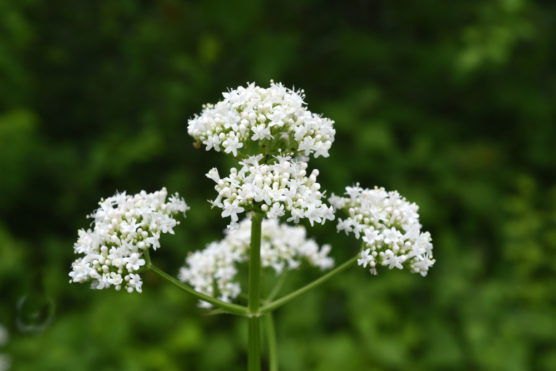
A study showed that inhalation of Valerian (used as an odorant) scent helps people sleep better and longer. Valerian produces fragile flowers at the start of summers, you can gather them and keep them in a vase. This will keep the plant from being invasive by reseeding.
It needs direct sunlight so the best place is near a window or use supplementary light if you got that. And like most herbs, well-drained soil is best for growth valerian. Spray water them when the soil feels dry. Valerian can grow taller so you may have to keep changing the pot or container. Make sure that the pot has drain holes so that the bottom of the pot never stands in water.
7. Lavender
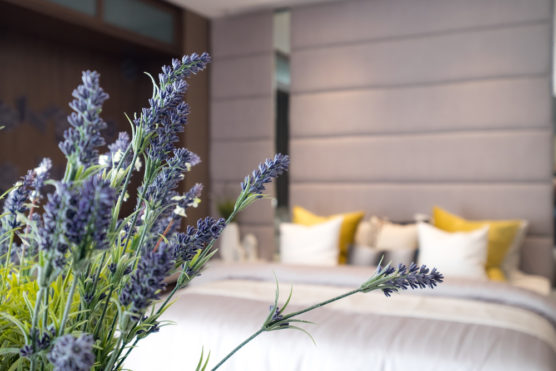
Lavender is one of the most used scents in aromatherapy. These are found mostly in Mediterranian regions. Lavender can grow to a knee-high level, so to grow it as a houseplant you would need to choose a dwarf plant. Some varieties of lavender that works as houseplants include ‘Goodwin Creek Grey’,’Munstead’, ‘Little Lottie’, ‘Canary Island Lavender’, and ‘Leaf Lavender’.
Lavender likes tight soil so don’t choose a big pot to plant it. Make sure that the pot has plenty of drainage holes and the soil is well-drained. Another tip is to keep adding crushed eggshells every month to the soil. They need a medium to high sunlight to flourish in general.
8. Chamomile
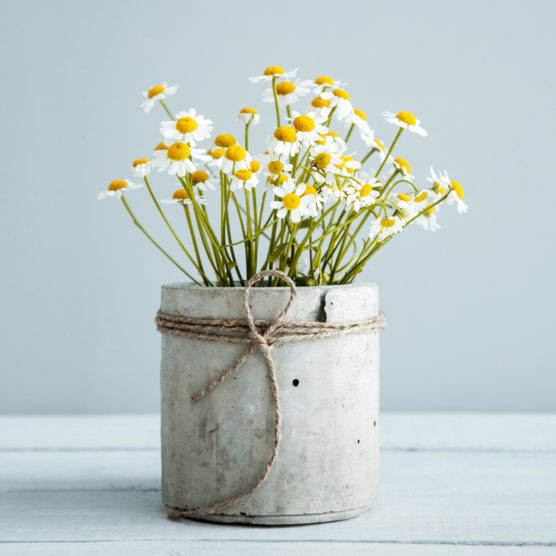
Chamomile is a very popular medicinal herb and is also used in aromatherapy. The terpenoids and flavonoids present in the flowers of chamomile provide it with medicinal properties that help treat insomnia and reduce anxiety and stress. Chamomile tea is well known to help people with insomnia.
To grow chamomile plants indoors, plant the seeds in a pot with good drainage and is 30cm in diameter. The best temperature for chamomile seeds to sprout is 68 degrees Fahrenheit. The soil should be moist but don’t overwater the plant. Keep the plant near a south-facing window for best results.
9. Bromeliad
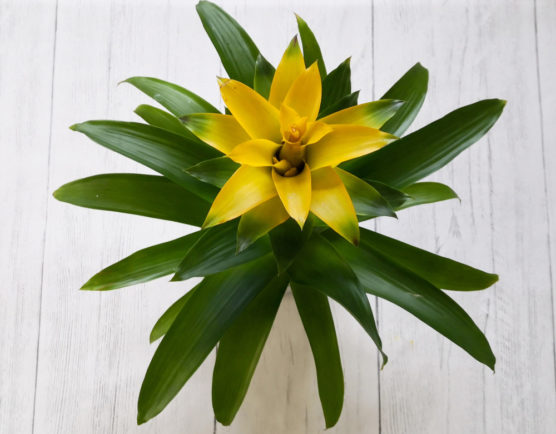
Bromeliad is an alluring tropical plant that will purify the air so you can have a better sleep. Bromeliad is best used as a desktop decor for your office or your home.
Do not let the soil completely dry out but also don’t let the plant sit in water. Bromeliad can grow in low light but direct heat will turn the leaves brown and give them an ugly downward curl.
10. Aloe Vera
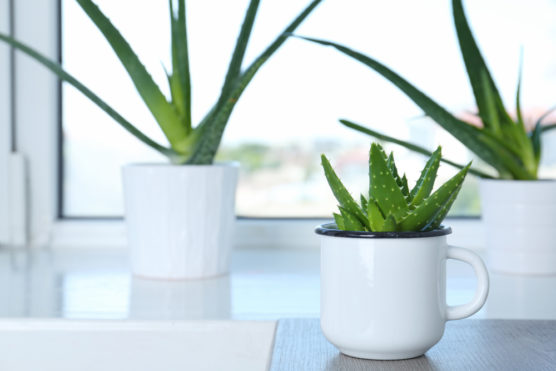
Aloe Vera is one of the best house plants you can have. Its sap has numerous usage, it helps in growing thick hair losing weight, building immunity, and so on. Other than that just keeping it inside your home can provide you cleaner air. The gel from aloe vera leaves among other things is also a great moisturizer and coolant.
Again it will need bright indirect sunlight but not extreme heat (extreme heat can dry the plant and turn it yellow). This wonderous succulent like most other house plants will need well-drained soil. Water aloe vera generously but not on a schedule (or too frequently, once every three weeks will do the job). Water even less frequently during winter. Fertilize the plant with general-purpose fertilizer once a month. The best temperature for growing aloe vera plants is between 50 degrees Fahrenheit to 80 degrees Fahrenheit.
11. Areca Palm
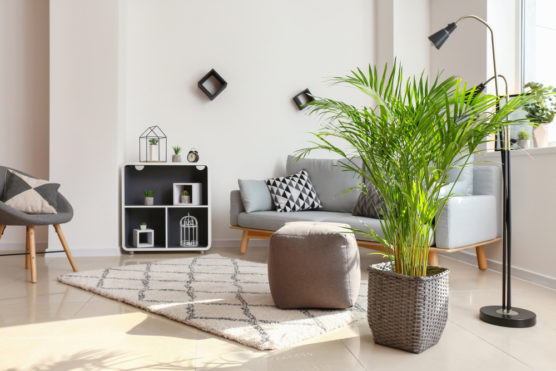
Areca Palm, also known as Dypsis lutescens is a large palm that can be grown as a house plant. These plants will bring a tropical touch to your home. So it doesn’t matter if you are going for the modern and chic look or vintage look in your home Areca palm will look beautiful in your home.
Areca Palm needs bright but indirect sunlight (direct sunlight will dry out the plant and turn the leaves yellow). Place them on a south-facing windowsill. Water them so that the soil is moist, don’t overdo the watering part. These plants require repotting once in 2-3 years. It is best to buy them small and then grow them as a grown areca palm can be expensive. Use palm potting mix to plant areca palm. Make sure the soil is tightly packed when you pot or repot the plant.
12. Bamboo Palm
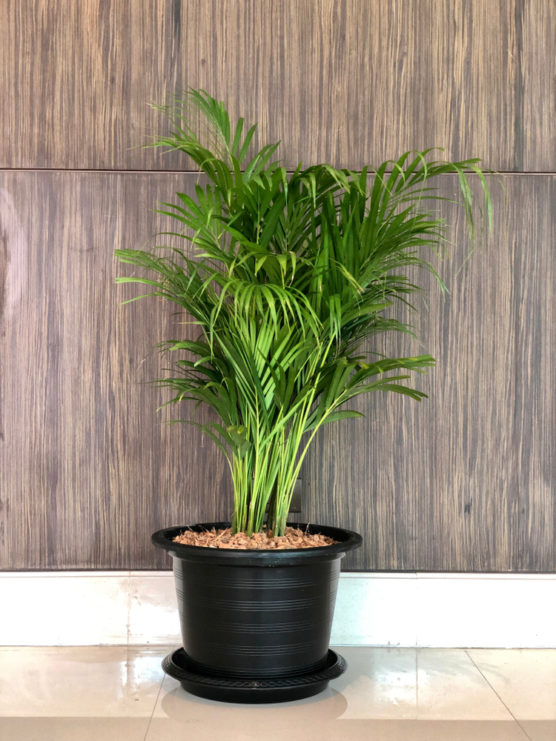
Bamboo Palm, also known as Chamaedorea seifrizii is another large palm that is best as a floor decor for your home. It cleans the air in your house by getting rid of toxins like trichloroethylene and benzene.
Bamboo Palm can live in low temperatures which makes it ideal as an indoor plant. Water when the surface of the soil feels dry and till the soil is moist. Place it near a south-facing window that provides indirect sunlight or use artificial sunlight. Well-drained soil and granular fertilizer work best for the bamboo palm.
13. California Poppy
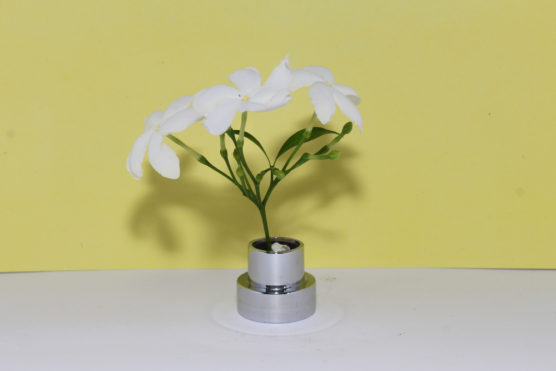
California poppy is a wildflower and there are so many shades of its flowers. Flowers from California poppy are dried and used for treating nervousness and anxiety in powdered form. California poppy is also known for improving sleep.
Plant the seeds in peat pots, it takes up to 20 days for them to germinate. The environmental condition needed for these seeds to germinate is quite hard to achieve indoors. California Poppy needs direct sunlight but also needs cool temperatures. It is recommended that you let the seeds sprout outside and then bring them in. Place them near a south-facing window so that they are exposed to sunlight, but not extreme heat. Use well-drained soil and apply a general-purpose fertilizer once a month.
14. Gardenia
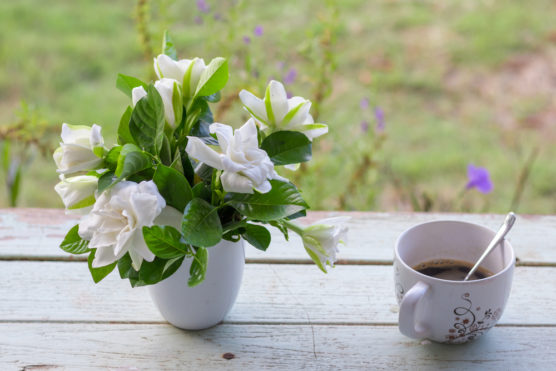
These dainty and fragrant florals make for great shelf decor. Gardenias scent is used in many perfumes and its essential oil is one of the most soothing essential oils out there.
They need at least four hours of sunlight daily, but direct sunlight can burn their foliage so a little shade during summer would help. Avoid drying out the soil, gardenias like their soil moist but not soggy. The ideal temperature for this plant lies between 50 degrees Fahrenheit to 55 degrees Fahrenheit. Keeping them in a room with more moisture will certainly help the plant. Acid-based fertilizer is the way to go when it comes to this beautiful house plant.
15. Golden Pothos
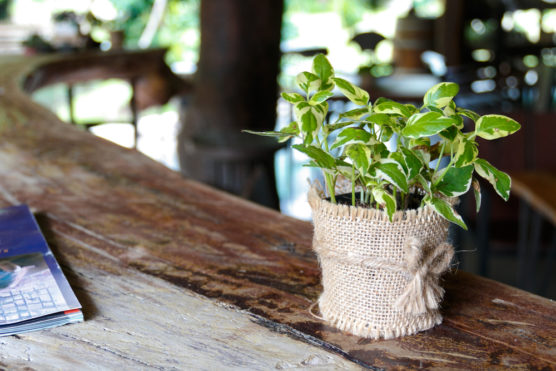
Golden pothos is another great choice as a bedroom plant. It helps to purify the air by getting rid of the toxins like carbon monoxide and formaldehyde. In addition to that, it is known to be a very low-maintenance house plant which makes a great shelf decor. This beautiful plant with its heart-shaped leaves and yellow stripes is just a treat for sore eyes.
Low light to medium indoor light is ideal for this plant. Well-drained soil that is kept moist with moderate watering works for golden pathos. Also, the best temperature for golden pathos to flourish lies between 70 – 90℉.

